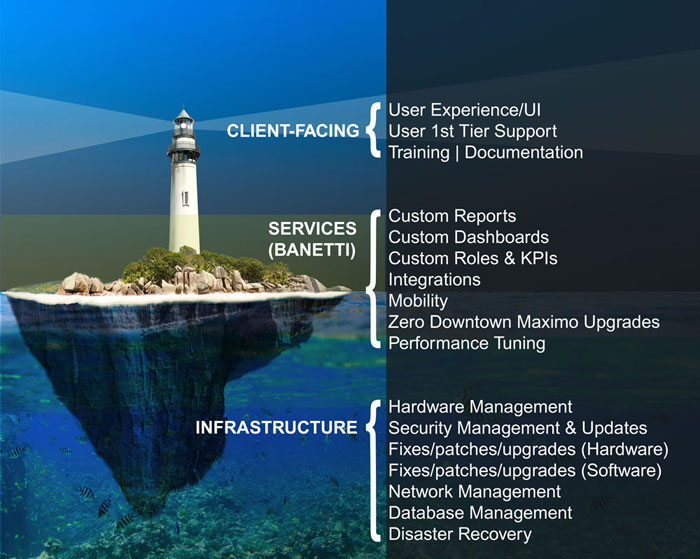The EAM Platform: A Metaphor
We think of an EAM platform as having three layers of integrated functionality similar to a lighthouse, on an island, in the sea. For that lighthouse to exist and function for its users (boat captains, let’s say), each of these layers must exist.
The part that users experience corresponds to the “lamp” atop the lighthouse, that part that boat captains experience directly. On the Maximo side, maintenance managers, executives and any other users of the EAM system will interact with the client-facing user interfaces (UI) and maybe get help directly from tech support or some direct training. That’s the users’ experience.
Supporting the “lamp” is the lighthouse, representing the Maximo software’s functionality and workflows. And the lighthouse itself sits on top of and is supported by the island.
In our metaphor, the island represents the services Banetti provides to support the software system. To get the UI you require, you need to customize reports, configure the dashboards, integrate with other backend systems, create training materials, keep the system tuned and upgraded and so on. Although users may not see these services directly, they form the bedrock of the overall EAM platform.
Just as with an island, which has a huge mass hidden under water that people may never even know is there, all EAM systems have a “hidden” infrastructure. The hardware, network, databases, backup systems, patches, upgrades and so on actually exist somewhere. The “hidden” infrastructure is the main part of what can be on-premises or in the cloud.
Although this “hidden” infrastructure is not what we as EAM professionals want to spend much time on, it tends to be a massive consideration when deploying your EAM system. On our site, we walk you through the pros-and-cons of the cloud versus on-premises deployment.
The specifics of your situation may vary and Banetti will address those specifics with you, point-by-point.
